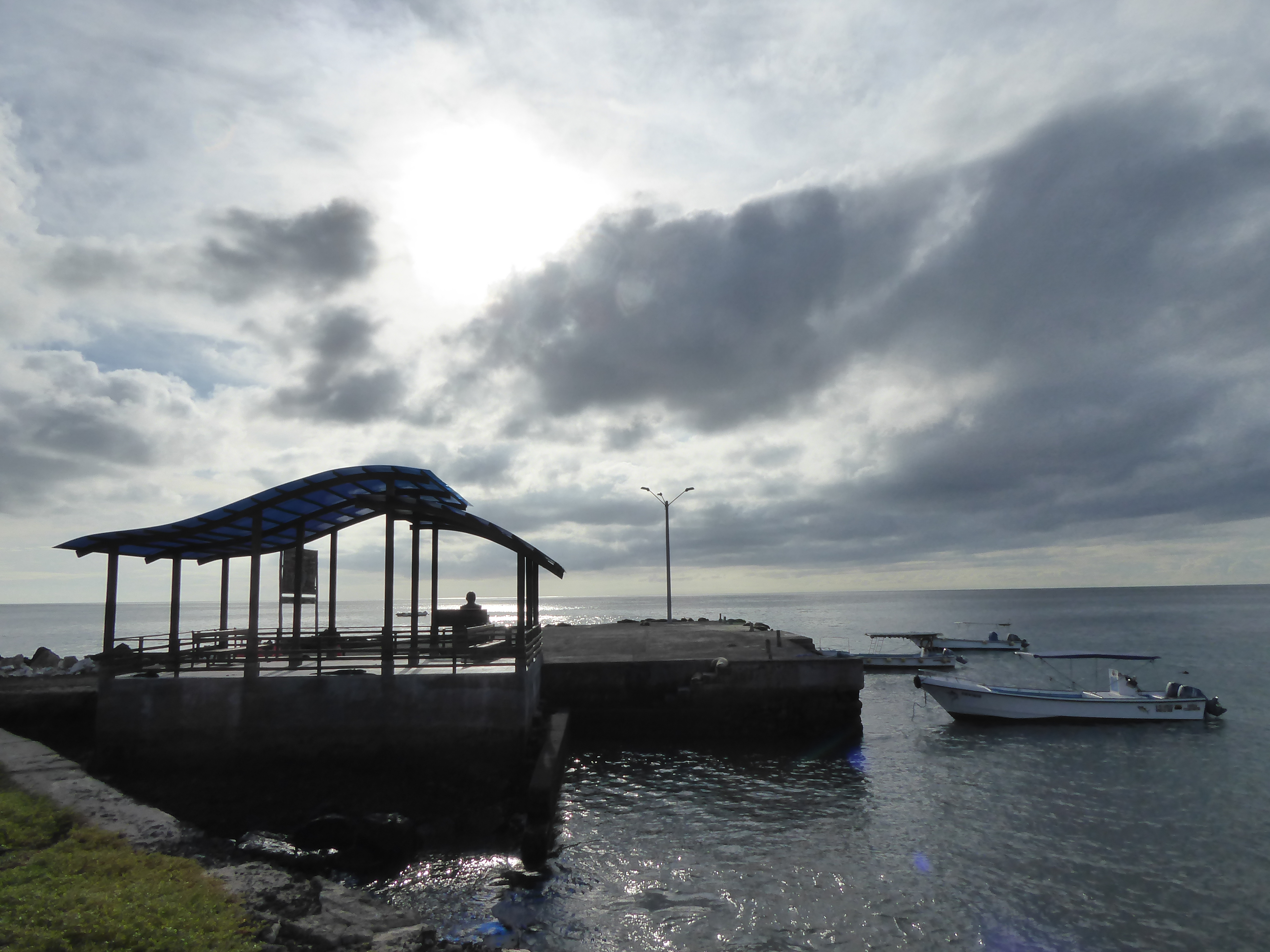 Twice a week a lancha (public speedboat) leaves Floreana for Santa Cruz. It takes two hours–too late to catch an on going boat to Isla Isabela the same day. Thus, getting to Isla Isabela, another two hours, requires sleeping in Santa Cruz (no doubt a happy circumstance for hotel owners in Santa Cruz).
Twice a week a lancha (public speedboat) leaves Floreana for Santa Cruz. It takes two hours–too late to catch an on going boat to Isla Isabela the same day. Thus, getting to Isla Isabela, another two hours, requires sleeping in Santa Cruz (no doubt a happy circumstance for hotel owners in Santa Cruz).
At least that’s what I was told.
However, I learned that a captain of a tourist charter, if willing, could take me directly to Isabela-in an hour and half-for the same $30 fare.
A few inquiries later brought me to a pool hall, hidden in the back of my “go to” eatery in Floreana, to seek out a Capitain Gabriel. I found him smoking a cigarette, shooting pool with a buddy and was relieved to see he was drinking soda rather than alcohol. I explained my situation and he responded succinctly with the fare and when to be where. I showed up, as directed, on the pier at 3pm. The guide of the tourists I was to join did not seem pleased with my arrangement. Fortunately, the tourists were extremely gracious and welcomed me aboard. I later heard that some people are not so lucky and are refused such passage outright.
I spent part of the trip speaking to an Australian about politics, usually unadvisable in the best of circumstances– fortunately we shared a common view, before the boat’s movement lulled us into quiet reflection and dozing along with the other passengers. The ninety minutes passed pleasantly and quickly.
Arriving in the harbor at Isabela I was told to stay on board with the luggage while the other tourists boarded a ferry and were whisked off toward land. A few moments later a different ferry pulled up. I got in while they loaded all the bags. My passage did not include the VIP treatment, but I enjoyed the chance to see behind the scenes. Once the task was completed, the luggage, ferry driver and I made our way to shore. Meanwhile a police boat was pulling up to the speed boat I just left for an inspection.
Once on shore, without a word, my bag was magically separated from all the others and passed over to me. I arrived in Isabela a day earlier than expected.
I’ll discuss my time on Isabela in another post…
Boat travel in the Galapagos is virtually obligatory and from my experience, very well organized. The ferrys, 18-footers with a partial tarp roof and wooden seats around the sides, are used to transport passengers and their belongings from the lanchas (speed boats about 30 feet with roof and padded seats along the sides which travel between the islands) to shore. Pangas-sturdy inflatable rafts with seating on the edges-seem primarily used for the cruise ships.
The men who work the vessels vary in age and often wear hats, sunglasses, face masks, long-sleeved shirts and gloves to protect them from the sun, shorts and sandals are the exception. They do not flinch no matter how heavy the suitcases and graciously assist people getting in and out of their boats. It was a comfort to have a steady hand at the ready! (Hands grip wrists.)
Shopping around at any one of the numerous travel agencies (tourism accounts for roughly 80% of the employment- Floreana may be the exception.) isn’t common. The prices are generally fixed at $30. You are given a paper receipt, with the name of the boat, date and time of departure .
Showing up half an hour early at the muelle (pier) is enough time to have your bags inspected (no organic matter is allowed to be transported between islands without some official approval- although the “search” was often perfunctory at best. I suspect they rely mostly on the good faith of the tourists. The risk is real in transporting potentially devastating insects.
People in uniform and other official employees have a clipboard with the passengers names, nationalities, passport number and boat. Once I was “checked-in” I was given a plastic name tag to wear around my neck that identifies my boat amongst the several that leave at the same time according to need. When the boat’s name is called we (around 18 passengers) line up like obedient school children awaiting our turn to board.
Our bags are loaded in the front of the ferry and we take a seat. This trip is just a matter of minutes. Time enough to travel from the muelle to our lancha and pay the driver- the fare ranges from 50 cents to one dollar. The bags are loaded from ferry to lancha and we embark.
The name tags are collected and we head off into the open waters to our destination seeing an array of rays, dolphins, frigates, sea turtles, and pelicans along the way.